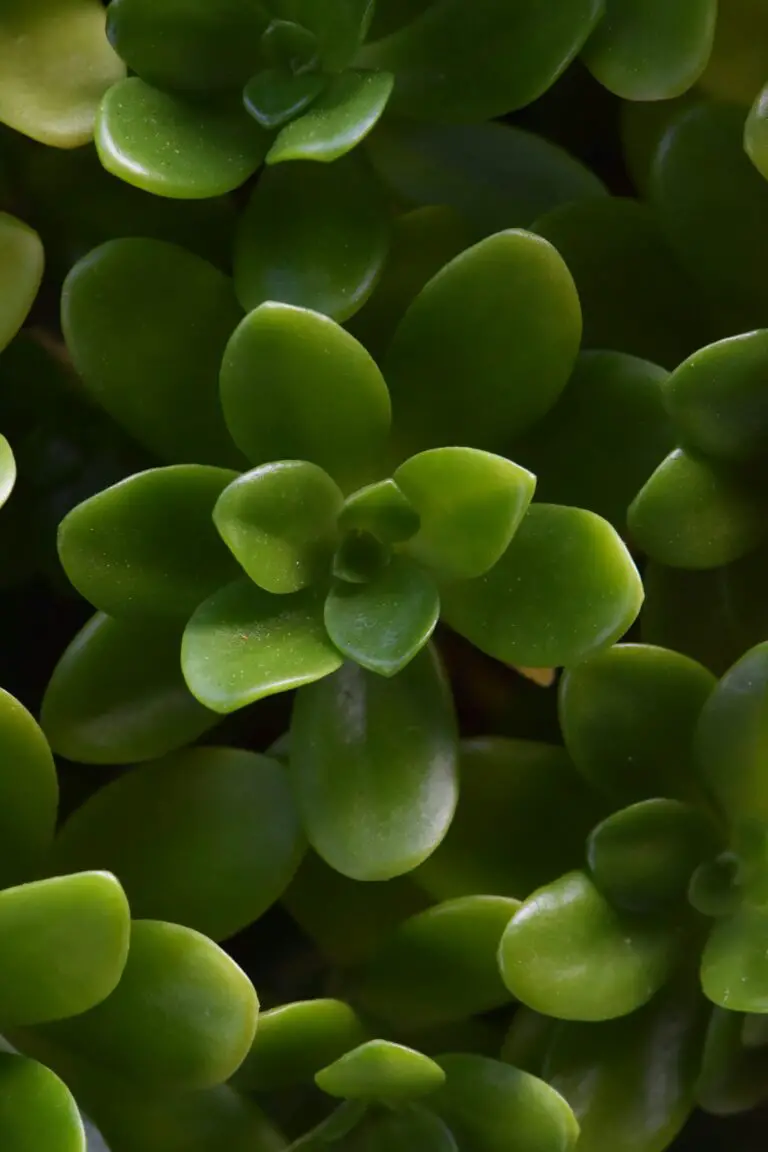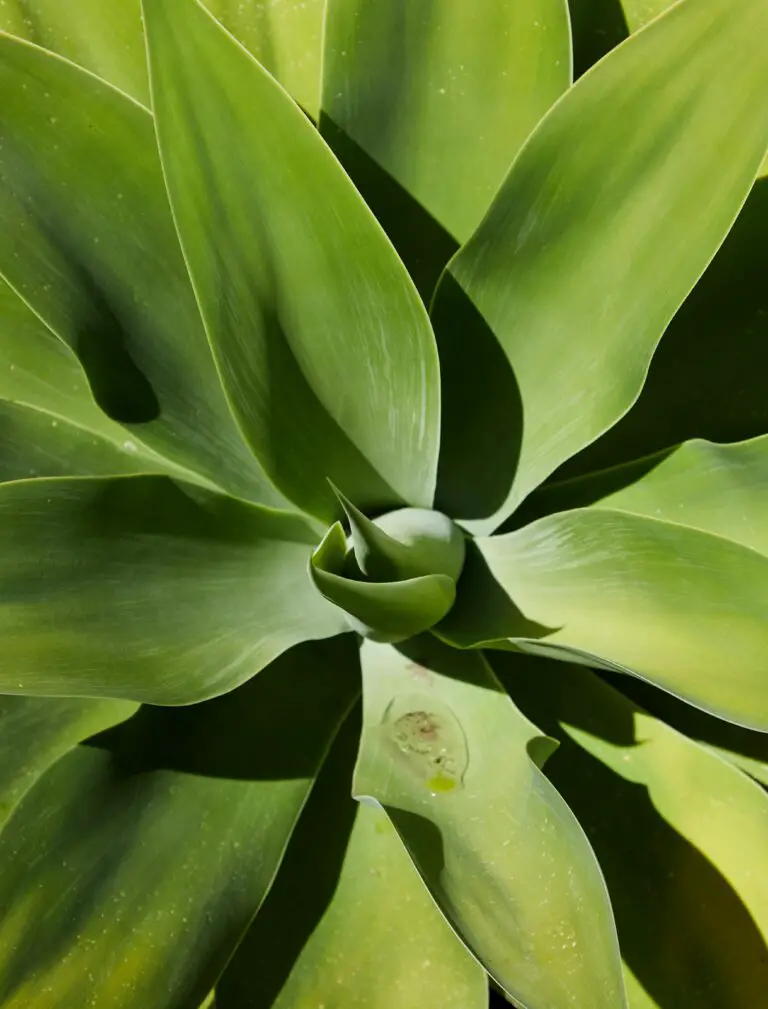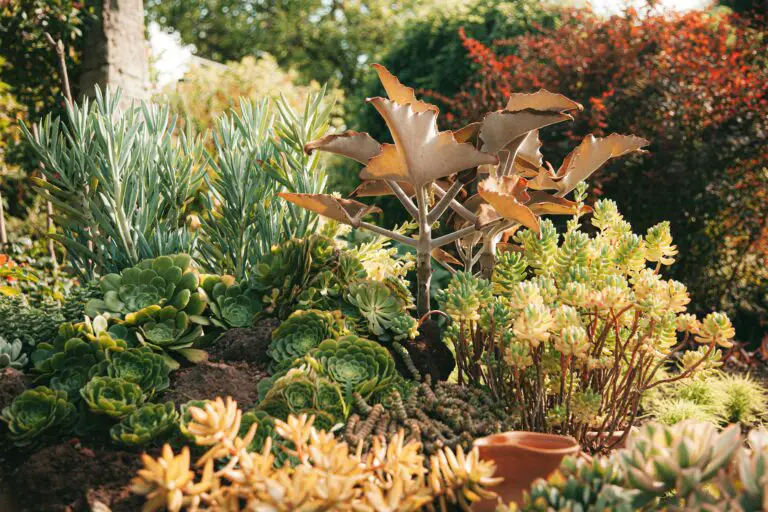Introduction to Sedums
Discover the diverse and enchanting world of sedums, a type of succulent known for their hardiness and beauty. These fascinating plants have captivated gardeners and plant enthusiasts alike, emerging from rugged origins to claim their spot in our hearts and homes. But where do sedums come from? Let’s dig into the storied soil of these botanical wonders and unearth the roots of their global journey.

Native to a variety of habitats across the Northern Hemisphere, sedums are true survivors, often thriving in conditions that would leave other plants wilting in defeat. Picture the rocky cliffs and alpine heights where these succulents cling with steadfast determination, painting the landscape with a vibrant palette of foliage and flowers. It’s this very resilience that’s made sedums a popular choice for those looking to add a touch of nature’s tenacity to their own gardens.
Whether basking in the full sun of a Mediterranean garden or brightening a North American rockery, sedums travel from their ancestral lands right into our personal green spaces. They offer a low-maintenance haven for busy bees and other pollinators, creating a bustling micro-ecosystem where once there was none. For top-notch tips on keeping these hardy perennials happy in your garden, check out this extensive sedum care guide.
Are you new to the succulent scene and looking for guidance? Our comprehensive guide on succulent care is just what you need to start your journey into the world of these drought-smart, stylish plants. Dive in, and before you know it, you’ll be cultivating your very own sedums, along with a diverse array of other succulents, with confidence and flair.
Sedums: A Botanical Overview
Delve into the botanical characteristics that define sedums, including their distinctive features and why they’re beloved by gardeners. These resilient succulents come with an impressive variety, but they all share certain hallmarks that seduce plant enthusiasts worldwide. Picture, if you will, a verdant tapestry woven together with the fleshy leaves of these versatile perennials, from roof gardens in Scandinavia to rockeries in North America.
Each sedum species carries a unique palette of colors, textures, and forms, offering an endless array of garden possibilities. Imagine seeing the frosted blues of ‘Blue Spruce’ sedum spilling over stone walls or the fiery reds of ‘Dragon’s Blood’ igniting your summer borders.

Renowned for their tough-as-nails attitude, sedums thrive in places where other plants dare not set root. These hardy stalwarts of the plant kingdom have adapted to a cornucopia of climates, flaunting their drought-defying skills in both arid and temperate zones.
Interested in learning more about the genus Sedum? Scholars and plant lovers have dedicated extensive research to understanding sedums’ growth habits and ecological needs. It’s through this understanding that we can appreciate the evolutionary marvels that these plants truly are.
For those seeking guidance on succulent care, exploring our succulent care guide could provide a wellspring of information to empower both novice and seasoned gardeners alike, ensuring their sedums not only survive but vigorously thrive.
Dive into the wonders of sedums in your own garden. Observe the mirage of bees and butterflies that blanket their star-shaped blooms in a bustling promenade of pollination. There’s no greater joy for the green-thumbed enthusiast than witnessing the dynamic ecosystem that sedums support, underscoring once more why these succulents capture the hearts of gardeners across the globe.
Historical Roots of Sedum Species
Imagine stepping into a lush, verdant realm where each leaf and stem tells the tale of an extensive journey across time and space. That’s the incredible story of sedums, a fascinating family of succulents that have traversed continents and nestled into various climates as they’ve evolved. But just where did these versatile plants, adored by gardeners and botanists alike, originally sink their roots? Let’s dig into the past to uncover the lineage of these resilient botanical travelers.
Sedums, often referred to as stonecrops, hail from a lineage that is as rich and varied as the colors of their fleshy leaves. These hardy succulents are believed to have originated in the Northern Hemisphere, flourishing in diverse regions ranging from the arid landscapes of Africa to the rugged terrains of the higher latitudes in Europe and Asia. It’s remarkable how they’ve adapted to some of the most extreme conditions, whether that means basking under the scorching sun or nestling in the cracks of a cold, stony mountain cliff.
Their adaptability is not just a trait; it’s a testament to their hardiness and a lifeline that has allowed them to spread far beyond their cradle of origin. Picture this: the sedum variety that is adding a burst of life to your rock garden may share a lineage with plants that have clung to the steep sides of the Himalayas or settled in the warm embrace of the Mediterranean basins. Unearth insights on caring for these sturdy succulents to enrich your own garden’s narrative with their enduring spirit.

Through trade routes and exploration, sedums witnessed a serene conquest. Botanical enthusiasts and intrepid explorers transported these jewels of the plant kingdom across oceans and nations, spreading their rich genetic tapestry from continent to continent. They thrived, bringing joy to those who cherished the beauty and simplicity of a plant that asked for so little and gave so much.
So next time you gaze upon a sedum, remember: you’re not just looking at a plant. You’re witnessing a living mosaic of history, a patchwork of resilience and beauty that has weathered storms, crossed deserts, climbed mountains, and ultimately found its way to you. Such is the marvelous history etched into every leaf of the sedums – a history that continues to unfold in gardens and homes across the world.
Geographical Distribution of Sedums
Embarking on a global trek to uncover the origins of sedums is like peeling back the layers of an intriguing botanical mystery. These resilient succulents have mastered the art of survival, sprouting up across diverse terrains and climates. Get ready to explore the far-flung corners of the world where these hardy plants have taken root!
Picture this: vast expanses of arid landscapes, where the sun scorches the earth and only the toughest flora thrives. That’s precisely where many species of sedums hail from. These plucky plants have evolved to conserve every precious drop of water, flaunting an array of adaptations that let them flourish where others falter. Originating from such challenging environments, it’s no wonder sedums can easily make themselves at home in our gardens and terrariums.
Now, imagine the contrast—hilly areas with cool climates offering a reprieve from the relentless heat. It’s here that some sedum species show their preference for a milder setting, dotting the landscape with a sprinkle of color. Whether it’s perched atop rocky outcrops or nestled in the crevices of stone walls, sedums are versatile enough to brighten even the most unexpected of places.
From the rugged cliffs along the Mediterranean coasts to the high altitudes of the Himalayas, sedums have embarked on an impressive geographical conquest. In these locations, each species has curated its own special nook, adapting to microclimates and demonstrating the remarkable versatility of the succulent family. It’s a botanical testament to the adaptability of life, showcasing the power of evolution in the plant kingdom.
Next time you stroll through your local nursery, take a moment to appreciate the global journey these sedums have undertaken. Each plant before you is not just a pretty addition to your home, but a living example of the enduring spirit of nature’s flora.

As we delve into the habitats of sedums, we’re not just talking about a few scattered locales—they’re a cosmopolitan bunch! These unassuming green gems have carved out a niche in nearly every continent, adapting to a panorama of environmental conditions. So, the next time you gaze upon a sedum, you’re not just looking at a plant, but at a global voyager that has journeyed through time and space to grace your garden.
Cultivating Sedums: A Global Affair
When it comes to sedums, or stonecrops, these resilient little succulents know no borders. From quaint English cottage gardens to the structured elegance of Japanese rockeries, sedums have become a staple in green spaces across the globe. Their hardy nature, coupled with an almost kaleidoscopic array of colors, shapes, and sizes, makes them a favorite among garden designers and plant enthusiasts alike.
Imagine a sedum, with its thick, fleshy leaves designed to retain water, thriving in the arid landscape of an urban rooftop garden. These versatile plants have adapted to such a multitude of environments that they’re often among the first choices for green roofs and wall plantings in cities, where they contribute not only beauty but also to the biodiversity and environmental health of urban areas.
But it’s not just in the public sphere that sedums play a leading role; they’re just as beloved in private gardens. From the United States to Australia, fans of these low-maintenance perennials have watched them transform sunny spots into tapestries of living color. Practical and pretty, they fill in the gaps, edge the borders, and generally bring joy to any onlooker.
And let’s not forget the social aspect—the way these humble plants can span continents and bring people together. Community gardening initiatives often use sedums as a way to introduce novices to the pleasures and practicalities of gardening. These initiatives foster not only a sense of camaraderie but also an awareness of sustainable practices and local flora.
Each spring and summer, as the sedums burst into life, they remind us of the simple beauty of nature and how it can be woven into our daily lives, no matter where we come from or the type of garden we cultivate.

The Versatility of Sedums in Landscaping
Sedums, those resilient and charming succulents, are the unsung heroes of landscaping realms worldwide. Call them what you will—stonecrops, orpine, or the botanical mouthful, Sedoideae—their reputation for adaptability could give even the chameleon a run for its money. So, what makes sedums a landscaper’s best friend, you ask? Let’s dig in, shall we?
For starters, consider their role as ground covers. Picture a lush, vibrant carpet of sedums sprawling beneath your feet, a living mosaic that thrives with minimal fuss. Forget the thirsty turf grasses that faint at the mere suggestion of drought; sedums gulp down the sun and sip on water, teasing out a tapestry of greens, reds, and yellows all year long. Communities from craggy alpine villages to sun-baked suburbs are watching these humble sedums transform barren patches into lush gardens that local pollinators buzz around with glee.
And let’s not pigeonhole them as mere ground huggers. Sedums leap to new heights in rocky alcoves, cascading down like botanical waterfalls intent on defying gravity. Envision a rock garden with sedums peeking through each strategic nook and cranny, turning what was once a stoic collection of stones into a symphony of color and life. The masterful way they blend into the contours of a rock garden is a testament to their go-anywhere, grow-anywhere gusto.
But perhaps the best showcase of sedum’s versatility is their performance in the wide range of environments they embrace. From arid deserts to mist-kissed mountainsides, sedums are unruffled by the elements. They welcome the sun’s fiery kiss and shiver through frosts without a whisper of complaint. Gardeners from Oregon to Ontario weave them into landscapes where other plants would merely shudder and retreat—a silent nod to the sedum’s stoic resilience.
Now, if you’re looking to paint your own canvas with these versatile succulents, let me plant a seed of inspiration in your mind. Consider the splendid varieties at your disposal: the ‘Autumn Joy’ sedum with its blush of rosy blooms, the ‘Dragon’s Blood’ that spills a ruby river, or the ‘Angelina’ that lights up with a golden glow. Each sedum variety offers a fresh palette for your landscaping masterpiece.
As you contemplate integrating sedums into your own outdoor space, take inspiration from the streets of Paris, where sedums crown the rooftops, basking in the cityscape—ironically proving to be as much a symbol of urban sustainability as they are of natural beauty. Or from the coastal gardens that dance to the rhythm of salty breezes, where sedums link arms with the sand and surf, unfazed by the spray or the sway.
So, you see, when we speak of where sedums come from, we’re not just recounting their storied history across deserts and mountains. We’re celebrating the richness they bring to any landscape, a hardy charm that endears them to gardeners and onlookers alike. With every sedum that takes root, a new story of growth, resilience, and beauty begins to unfold.
Sedum Varieties and Their Origins
Let’s turn over a new leaf and explore the mesmerizing world of sedums, succulent plants known for their capacity to withstand drought and bring vibrant life to rocky terrains and gardens alike. Sedums, or stonecrops as they’re sometimes called due to their tough-as-stones resilience, boast an array of forms and thrive in diverse habitats. But where do these hardy little survivors originally hail from? Gear up for a botanical journey that traces the roots of these verdant wonders.
The sedum spectrum ranges from cold-hardy varieties that laugh in the face of frost to those that prefer the kiss of the sun in warmer climates. Take, for instance, the ever-popular Sedum spectabile, a showstopper with clusters of starry flowers, tracing its lineage back to the Asian continent. Then there’s the Sedum acre, an intrepid colonizer of European origin, sprawling its yellow blossoms like a sunlit carpet across the ground.
Not to be outshone, North America has its own native sedums, such as the Sedum ternatum, often found clutching the rugged cliffs of the eastern United States with its whorled, white flowers. These are living proof that sedums have found their niches in various parts of the globe, each adapted to its unique environment. And these are just a few leaves from the sedum family tree—the genus boasts over 400 species, each with its own tale of origin, adaptation, and beauty.
What truly makes sedums a fascinating study in geography and botany is how they’ve adapted to their surroundings. Have you ever wondered how the Sedum reflexum, with its needle-like leaves, evolved to conserve water in the mountainous regions of Europe? Or how the Sedum morganianum, with its charmingly named “donkey tail,” dangles gracefully from rocky outcrops in the wilds of Mexico?
These are stories written in the very DNA of the plants, stories that remind us of the incredible diversity and resilience of life. Sedums offer a green tapestry that threads through continents, weaving a rich narrative of survival and splendor.
Witness the wonders of these succulents in action and get a glimpse into how they’ve captivated gardeners and botanists alike. Just click play and prepare to be enthralled by the fascinating world of sedums and their origins!
As we delve deeper into the botany of sedums, it’s clear that what sprouts from the ground is much more than just a plant—it’s a tiny, living testament to the history of the earth and the adaptability of life. Each sedum variety not only adds texture and color to our landscapes but also serves as a reminder of the places they’ve come from and the centuries they’ve withstood, changing and thriving against the odds. So, the next time you pass by a sedum, take a moment to appreciate its journey, for it has traveled a long botanical road to grace your garden.
Sedum Conservation Efforts
When it comes to plant conservation, not every green warrior gets the limelight. Take sedums, these succulent jewels are as robust as they are overlooked. But let’s not forget, even the hardy need a haven. Sedum conservation is not just about preserving a plant; it’s about securing an ecosystem. These resilient beauties hold the soil, support pollinators, and add that sparkle to the rocky crevices where few dare to grow.

In their native habitats, sedums provide essential services that are as varied as their species. But with human expansion and climate change, these habitats are shrinking. Conservationists are taking a stand, though. From the rolling hills of Mexico, where Sedum mexicanum plants frolic in the wild, to the rocky outcrops of South Korea, home to the rare Sedum takeoi, efforts are underway to ensure these species aren’t lost in the winds of change.
Real-life examples abound. In the UK, green rooftops are abuzz with sedum plantations, a model of urban conservation that combines biodiversity with building. Here, amid the cityscape, sedums carve out a living, cooling structures, and giving a leg up to local wildlife. Meanwhile, back in North America, initiatives like the Seed Savers Exchange are akin to Noah’s Ark for plants, cradling sedum seeds in their vault, a bulwark against biological loss.
So, why should we be champions for sedum survival? Because these unassuming succulents are the unsung heroes of the botanical world, ready to rise to the environmental challenges of our time. They’re more than just a gardener’s delight; they’re keystones in the arch of biodiversity.
Frequently Asked Questions
How Can I Ensure My Sedums Thrive?
For those asking themselves “where do sedums come from?” and whether their environment is ideal—worry not! Sedums, with their succulent leaves and hardy nature, originally hail from various regions, including the cold hems of the arctic, the dry heat of the desert, and the rocky crags of the mountains. This diverse origin story means they’re remarkably adaptable, and with a few simple tips, you can see them flourish right in your backyard or windowsill.
What Are the Best Practices for Sedum Care?
Whether you’re a seasoned greenthumb or a budding plant enthusiast, caring for sedums is delightfully straightforward. Regaling with robustness, they demand minimal water as their plump leaves store moisture aplenty—making them a superb choice for the forgetful waterer. Ample sunlight and well-draining soil mimic their natural habitats perfectly and encourage healthy, vibrant growth.
The Secret to Propagating Sedums
Propagation is a breeze with these resilient succulents. Imagine breaking off a piece, laying it onto soil, and watching as it takes on a life of its own, roots delving deep and new shoots reaching for the sun. Sedums are masters of multiplication, so whether from leaf cuttings or separated clumps, they’ll readily offer up fresh offspring for you to grow your sedum sanctuary. Witness this marvel for yourself with a visual guide:
${videoEmbed}
Do Sedums Play a Role in Ecosystem Support?
Beyond their ease of care and propagation, sedums are vanguards of the ecosystem. Picture a bustling hub of activity as bees and butterflies frequent their star-shaped blooms—an ode to their role in pollination. These drought-tolerant plants also combat soil erosion, their roots forming a living mesh that holds the earth in place. In urban settings, their proclivity for green roofs and vertical gardens translates to improved air quality and habitats for city-dwelling wildlife. Truly, sedums are not just a gardener’s ally but a friend to the environment at large.



